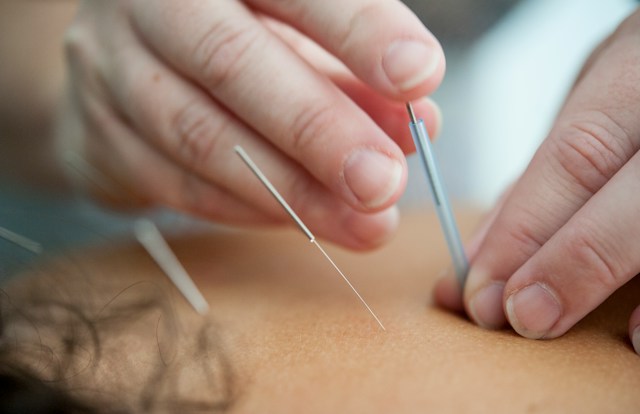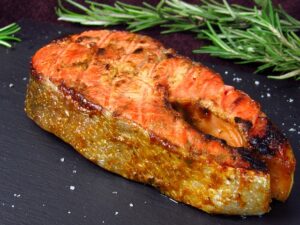Rotator cuff injuries can hurt a lot and make it hard to do daily things. Finding good ways to treat them and make your shoulder feel better is important. One treatment people are talking about is called dry needling.
This guide will discuss dry needling and how it might help with rotator cuff pain. We’ll cover what it is, why it’s good, how it works, and what patients think about it. By the end, you’ll know more about this treatment and how it could help you feel better.
Table of Contents
Understanding the Rotator Cuff
Anatomy of the Rotator Cuff
To understand how dry needling can help with rotator cuff pain, you need to know about the parts of the rotator cuff. The rotator cuff has four muscles and tendons that connect your upper arm bone to your shoulder blade. These muscles help keep your shoulder stable and let you move your arm.
Common Causes of Rotator Cuff Pain
Rotator cuff injuries are often the result of repetitive overhead motions, trauma, or age-related degeneration.
Common causes include:
- Overuse from sports or manual labor.
- Traumatic injuries, such as falls.
- Degenerative changes over time.
Symptoms and Impact on Daily Life
The symptoms of a rotator cuff injury typically include:
- Pain, especially when raising the arm.
- Weakness in the affected shoulder.
- Limited range of motion.
- Difficulty sleeping due to discomfort.
These symptoms can significantly impact daily life, from simple tasks like getting dressed to more complex activities like playing sports.
What is Dry Needling?
Definition and Explanation
Dry needling is a simple treatment where thin needles enter tight or painful muscles. It’s not like acupuncture, which is about balancing energy. Dry needling aims at muscle knots and pain.
How Dry Needling Differs from Acupuncture
Dry needling and acupuncture both use needles, but they are different. Acupuncture tries to balance your body’s energy, while dry needling works on relaxing tight muscles and reducing pain.
Mechanisms of Action
Dry needling works through several mechanisms:
- Disruption of trigger points: The needles help release tight muscle knots.
- Pain modulation: They stimulate the nervous system to reduce pain signals.
- Improved blood flow: Needling promotes blood circulation, aiding in tissue healing.
Benefits of Dry Needling for Rotator Cuff Pain
Pain Relief and Improved Function
Pain relief is one of the primary benefits of dry needling for rotator cuff pain. Patients often experience reduced pain and improved shoulder function by targeting trigger points and releasing muscle tension. This can lead to enhanced mobility and a better quality of life.
Reduced Muscle Tension and Trigger Points
Dry needling is really good at dealing with tight muscles and painful spots, which occur frequently in rotator cuff injuries. These painful spots can send pain to other places, so treating them directly is important to feel better.
Accelerated Healing and Recovery
Needling can improve your blood flow and help your body heal faster. It might help you recover from a rotator cuff injury faster and return to your usual activities sooner.
The Dry Needling Process

Initial Assessment and Consultation
Before you get dry needling for rotator cuff pain, it’s really important to talk to a qualified expert. They will check your condition, talk about your medical history, and make a plan just for you.
Dry Needling Procedure Explained
A dry needling session involves inserting thin needles into specific points in the affected muscles. The procedure aims to release trigger points and alleviate muscle tension. Patients often describe the sensation as a mild ache or twitch, which is usually brief.
Duration and Frequency of Sessions
How often you do dry needling can change depending on how you feel and how your body reacts. Some people feel better immediately, but others may need to come for many sessions over a few weeks.
Safety and Potential Side Effects
Common Side Effects
Dry needling is generally considered safe, but it can have side effects like any medical procedure. Common side effects include:
- Temporary soreness at the needling site.
- Minor bleeding or bruising.
- Fatigue or mild discomfort post-treatment.
Risk Factors and Precautions
While dry needling is safe for most individuals, certain groups should exercise caution, including those with bleeding disorders or a fear of needles. Pregnant individuals should inform their practitioner before the session.
Credentials of Practitioners
It’s crucial to choose a qualified and licensed practitioner for dry needling. Look for professionals with appropriate certifications and experience in treating rotator cuff injuries.
Finding a Qualified Dry Needling Practitioner
Qualifications and Certifications to Look For
When searching for a practitioner, consider their qualifications and certifications. Look for certifications related to dry needling, physical therapy, or other relevant fields.
Tips for Choosing the Right Professional
Choosing the right practitioner is essential for a successful treatment outcome. Consider factors such as experience, patient reviews, and the practitioner’s communication ability.
Questions to Ask During Initial Consultation
During your initial consultation, don’t hesitate to ask questions about the practitioner’s approach, treatment plan, and expected outcomes. Clear communication is vital for a positive experience.
Patient Experiences and Testimonials
- Stories from Real Rotator Cuff Patients
Hearing about real people who tried dry needling for their rotator cuff injuries can help you understand how it works and what to expect.
- What People Say and How It Helped
Hearing from patients who got better with dry needling can give you hope and make you feel more confident about trying it.
- Learning from Others’ Experiences
Seeing how others overcame challenges and got better with dry needling can inspire you and teach you important things about the treatment.
Combining Dry Needling with Other Treatment Modalities
Mixing Dry Needling with Physical Therapy
Dry needling, together with regular physical therapy, can be a strong way to treat rotator cuff injuries. It helps with both muscles and the function of the shoulder.
Other Helpful Therapies and Exercises
Different therapies and exercises can make dry needling work even better for rotator cuff problems.
A Full Treatment Plan
Making a complete plan that includes dry needling and other treatments is the best way to heal your rotator cuff. It looks at all parts of the problem to help you get better.
Research and Studies on Dry Needling for Rotator Cuff
- What We Found Recently
We’ll discuss the newest research on dry needling for rotator cuff pain and what it means.
- How Well It Works
We’ll look at the science and see if dry needling helps with rotator cuff pain compared to other treatments.
- What’s Coming in the Future
We’ll also explore what scientists are still studying and what might change about dry needling in the future.
Conclusion
In summary, dry needling is a promising choice for people looking to ease rotator cuff pain and make their shoulder feel better. It might only work for some, but it has helped many. If you’re considering trying it, talk to an expert who can figure out what’s best for you and make a plan.
Featured Image by freepik.com




